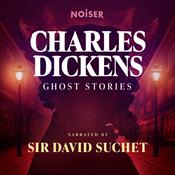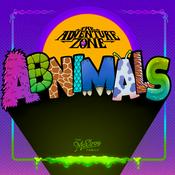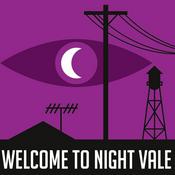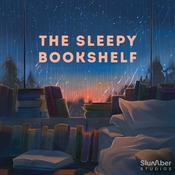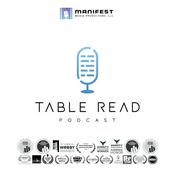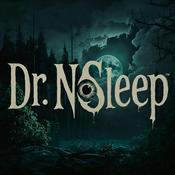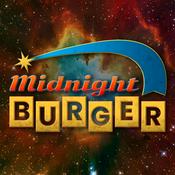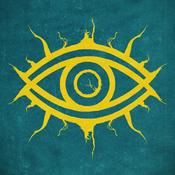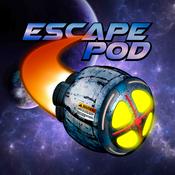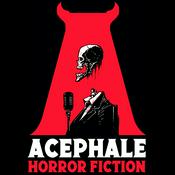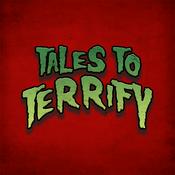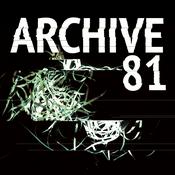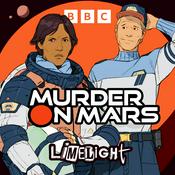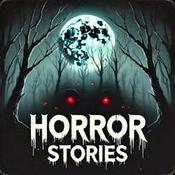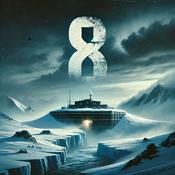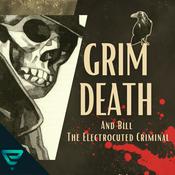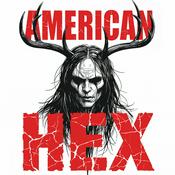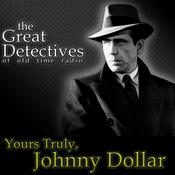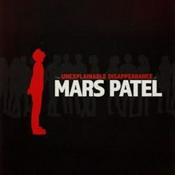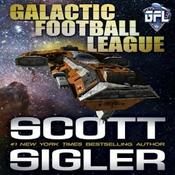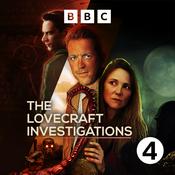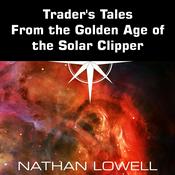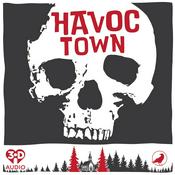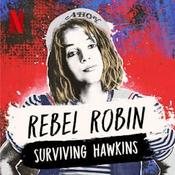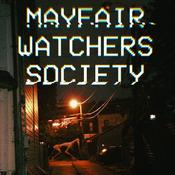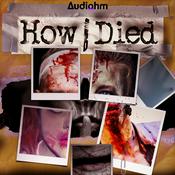67 episodes

Venus, Interstellar Visitors, and Auroras with Dr. David Grinspoon
12/14/2025 | 41 mins.
Are Coronal Mass Ejections dangerous to life on Earth? When are we finally going to plunge through the sulfuric acid clouds to measure the atmosphere of Venus. And what’s up with 'Oumuamua and 3I/Atlas? To find out, Dr. Charles Liu and co-host Allen Liu welcome astrobiologist Dr. David Grinspoon, aka Dr. FunkySpoon. As always, we start with the day’s joyfully cool cosmic thing: the arrival at Earth of two consecutive Coronal Mass Ejections on Nov. 11, 2025, creating an amazing display of Northern and Sothern Lights. In the US, aurora were seen as far south as Texas and even Central America, and yet Chuck, Alan and David were all frustrated by clouds in their own attempts to see them! Luckily, they’ve each already seen auroras with their own eyes, a viewing event David likens to seeing a total solar eclipse. David discusses how solar flares can impact human technology, but that while solar flares from other stars could be dangerous for life on their planets, at this point in our sun’s lifetime, they are unlikely to wipe out life on Earth. Chuck shares aurora images that were taken by our previous guest, astrophotographer Elliot Severn. For our audience questions this week, we’re answering questions given to Chuck while he was presenting at an event in Erie, PA. The first question Chuck asks David is, “When we have interstellar visitors like 'Oumuamua and 3I/Atlas, [1] why are they moving so fast in our space? They seem to defy gravity [2] How can they know what 3I/atlas is made of but not the density or materials?” David explains why the extreme speed at which they are moving is actually proof that they are interstellar objects and not something else. He also discusses how we use spectroscopy to determine what they’re made of the same way we determine what distant stars and exoplanets are made of. Our next question from Erie, PA is, “Is there a mathematical probability or formula to predict the likelihood of life existing int he universe? In other words, has someone developed a model to predict how many unique things need to happen for life to evolve?” David explains the Drake Equation, a series of questions that help astrobiologists assess the probability of intelligent life in the galaxy. Our last question from Erie is, “If humans find life on a different planet, would we actually understand how to coexist with the information, or will world leaders hide the truth from us?” David points out – as someone who has helped devise astrobiology policy – that the response depends in part on the specifics of the discovery, like how far away that life is. But would the government be able to hide it? David says that the scientists who discover it would be shouting it from the rooftops: “How long would it take to type it and hit send?” And as Chuck points out, the very act of the government trying to censor it would turbocharge the speed at which scientists would get the news out. The real problem, David says, is the potential of each discovery being overhyped by journalists, leading to public burnout. He brings up two examples of overhype: the discovery of possible biosignatures in iron nodules on the Martian rock Cheyava Falls in 2024 by the Perseverance Rover, and the presence of dimethyl sulphide in the atmospheric composition of exoplanet K2-18 b. Next, we turn to David’s “second favorite planet,” Venus, which he has studied and written about extensively. David shows us the first book he ever wrote, “Venus Revealed” and talks about upcoming missions to Venus: two from the US, DAVINCI and VERITAS; a European Space Agency mission named EnVision; a Venus Orbiter Mission by India’s ISRO, and a private Rocket Lab mission to Venus. David, who is involved with the DAVINCI mission, tells us about the plan to plunge through the sulfuric acid clouds to measure the Venusian atmosphere and surface with modern instruments for the first time. We end with a discussion of the anti-science cycle we’re going through, and David shares why he thinks this moment is so unusual and scary, but also why there is reason for hope. Chuck talks about why scientists take the long perspective, and David reminds us of the huge worldwide support for the exploration of space. If you’d like to know more about David, you can check out his YouTube channel @DrFunkySpoon, or @DrFunkySpoon on Blue Sky and Instagram. We hope you enjoy this episode, and, if you do, please support us on Patreon. Image Credits: Images of aurora over Connecticut. Credit: Elliot Severn Coronal Mass Ejection. Credit: NASA Orbit of ‘Oumuamua. Credit: CC Orbit of 3I ATLAS. Credit: NASA/JPL-Caltech Radar map of Venus made by NASA’s Magellan spacecraft. Credit: NASA/JPL-Caltech/USGS Nodules on Mars rock Cheyava Falls. Credit: NASA James Webb Space Telescope – Atmospheric composition of exoplanet K2-18 b. Credit: NASA, CSA, ESA, J. Olmstead, N. Madhusudhan Venus viewed from orbit. Credit: NASA/JPL-Caltech #LIUniverse #CharlesLiu #AllenLiu #SciencePodcast #AstronomyPodcast #DavidGrinspoon #DrFunkySpoon #Oumuamua #3IAtlas #InterstellarObjects #CoronalMassEjections #aurora #solarflares #DAVINCI #VERITAS #EnVision #antiscience #spaceexploration

Rings, Orbits and Space Storms with Dr. Phil Nicholson
11/30/2025 | 46 mins.
How do planetary ring systems rings form, and what keeps them in line? What exactly is the Dragon Cloud of Saturn? And what’s up with quasi moon 2025 PN7? To find out, Dr. Charles Liu and co-host Allen Liu welcome Cornell University’s dynamical astronomer Dr. Phil Nicholson for a refresher course in orbital mechanics. As always, though, we start off with the day’s joyfully cool cosmic thing, which is right up Phil’s alley: the recent discovery of quasi moon 2025 PN7. Phil unpacks the orbital mechanics to explain the critical differences between quasi moons and regular moons, and also 2025 PN7’s strange relationship to Earth’s orbit. He also explains the dynamics of the sun’s tidal forces and Earth’s Hill Sphere. For our first question from the audience, Jameson asks, “Are meteorites smaller copies of planets. Are all of them the same?” Rather than discuss meteorites, which are the tiny survivors that have crashed on Earth, Phil pivots to where many of them come from in the first place: asteroids. Really big asteroids share some characteristics with planets, like being spherical in shape, whereas the smaller ones can be highly irregular, like the dumbbell-shaped asteroid 216 Kleopatra, or Arrokoth, previously known as Ultima Thule. Chuck asks Phil about the different shapes large asteroids can come in, and Phil points out 433 Eros, the second largest Near Earth Object, which is banana shaped. The ensuing brief discussion of the “is it a long, skinny asteroid or an interstellar starship?” debate, like the one sparked by Oumuamua, leads to a conversation about Arthur C. Clarke’s “Rendezvous with Rama”, which described just such a starship back in 1973. Somehow, we end up looking at the “face” on Mars and the “Death Star,” aka, Saturn’s moon Mimus as it was imaged by the Cassini spacecraft. Phil actually worked on the Cassini mission, and Chuck asks him to talk about his experience peering hundreds of miles deep into Saturn’s atmosphere with the spacecraft’s Visible and Infrared Mapping Spectrometer (VIMS). Along with other instruments run by other teams, the mission changed our perception of Saturn’s “boring” atmosphere, documenting aurora, lightning, and giant storms like the “Dragon Cloud of Saturn.” Our next student question comes from Marvin, who asks, “What exactly is a Shepherd moon?” To answer, Phil describes what Saturn’s rings are made of, how they form, and how they’re structured. He explains what happens when particles that make up the rings collide, why some rings spread over time, while others stay very narrow, and the role Shepherd satellites play in the process. We end with Chuck soliciting a few classic sci-fi recommendations from Phil, who suggests anything by Arthur C. Clarke, the Foundation Trilogy by Isaac Asimov, and almost anything by Larry Niven, including Ringworld, his most famous series. We hope you enjoy this episode of The LIUniverse, and, if you do, please support us on Patreon at https://www.patreon.com/theliuniverse. Credits for Images Used in this Episode: Orbit of quasi moon 2025 PN7 – Credit: NASA/JPL Earth’s Hill Sphere extends between the Lagrange Points L1 and L2. – Credit: Creative Commons / Xander89 433 Eros, a banana-shaped asteroid. – Credit: NASA/JPL/JHUAPL 216 Kleopatra, a dumbbell shaped asteroid – Credit: NSSDC, NASA Arrokoth, previously known as Ultima Thule – Credit: NASA/Johns Hopkins University Applied Physics Laboratory/Southwest Research Institute/Roman Tkachenko The “face” on Mars next to a higher resolution image of the same hill. – Credit: NASA / JPL / University of Arizona Mimus as imaged by the Cassini spacecraft. – Credit: NASA / JPL-Caltech / Space Science Institute Visible and Infrared Mapping Spectrometer (VIMS) image of Saturn – Credit: NASA/JPL/Space Science Institute Dragon Cloud of Saturn – Credit: NASA/JPL/Space Science Institute Shepherd moon animation showing Prometheus (right) and Pandora (left) both orbit near Saturn's F ring. – Credit: NASA/JPL/Space Science Institute Uranus ring schematic, solid lines are rings; dashed lines are moon orbits. – Credit: Public Domain / Ruslik0 #LIUniverse #CharlesLiu #AllenLiu #SciencePodcast #AstronomyPodcast #DynamicalAstronomy #PhilNicholson #OrbitalMechanics #Rings #SpaceStorms #QuasiMoons #2025PN7 #HillSphere #433Eros #Asteroid #216Kleopatra #Arrokoth #UltimaThule #Cassini #VisibleAndInfraredMappingSpectrometer #VIMS #DragonCloudOfSaturn #ShepherdMoon

Tiny Galaxies and Massive Black Holes with Dr. Matt Taylor
11/15/2025 | 39 mins.
Can an ultra-compact dwarf galaxy have a supermassive black hole at its center? Are there galaxies with supermassive black holes that are offset from their galactic centers? To find out, Dr. Charles Liu and co-host Allen Liu welcome “the other” Dr. Matt Taylor, an Assistant Professor of Astronomy at the University of Calgary, who joins us from the control room of the largest astronomical telescope in Canada, at the Rothney Astrophysical Observatory (RAO) in Alberta, Canada. As always, though, we start off with the day’s joyfully cool cosmic thing, which starts with the discovery of a supermassive black hole in the middle of an ultra-compact dwarf galaxy M60-UCD1 located in the Virgo galaxy cluster. That led to the discovery of more 4 UCDs in the Virgo Galaxy Cluster and 1 in the Fornax galaxy clusters, but then the limits of technology prevented the discovery of any additional UCDs. But now, by using the James Webb Space Telescope, Matt and his fellow researchers (including Dr. Vivienne Baldassare, our former guest for Black Holes and Space Junk with Vivienne Baldassare) have just published a paper about their discovery that in the smallest, lowest mass UCD yet found, they found a roughly 2,000,000 solar mass black hole. Basically, that’s a tiny galaxy to hold a supermassive black hole, and Matt is sure there are many more of these waiting to be discovered. After that Matt tells us about his atypical journey to astronomy, including his first career – as a professional chef. When cooking stopped being fun, Matt enrolled at a local community college and “moved from gastronomy to astronomy” as Allen puts it. Our first audience question comes from our Patreon Patron Taylor L, who asks, “Is it possible dark energy and the acceleration of the universe's expansion could be explained by the idea that the black hole we live in is constantly devouring matter from outside?” Matt passes on determining whether or not we live inside a black hole. But, he explains that while at the galactic level expansion is happening on a really large scale, at a smaller scale like our local group of galaxies (Milky Way, Andromeda, and local dwarf galaxies), our mutual gravitation counteracts that expansion. Matt goes on to discuss how accretion disks are what makes it possible to “see” a black hole, but that ultra-compact dwarf galaxies don’t have gas and dust forming accretion disks. Instead, they use stellar velocities to find black holes in UCDs. Next up, Matt tells us about some of the research he’s doing into archetypal compact elliptical (cE) galaxies, which have the mass of a giant galaxy put into the volume of a dwarf galaxy, and how black holes appear in these systems. And Matt dangles another upcoming paper about galaxies with supermassive black holes that are offset from their galactic centers. For our next audience question, Pshemo asks: “We often say gravity is weak compared to other forces. But in the right regimes, like near black holes and neutron stars, or on large cosmic scales, it dominates every other interaction. Should we stop calling gravity a weak force?” It’s a thought-provoking question with an even better answer, so please watch or listen to the episode to hear it yourself from Matt. If you’d like to know more about Matt, you can check out his website, mataylor5128.github.io. (The 5128 comes from the famous and very cool galaxy NGC 5128, aka Centauras A) We hope you enjoy this episode of The LIUniverse, and, if you do, please support us on Patreon. Credits for Images Used in this Episode: Virgo and Fornax galaxy clusters. – Credit: Creative Commons / Atlas of the Universe/ Richard Powell Southern portion of the Virgo Cluster as imaged by the Vera C. Rubin Observatory in very high resolution, taken on June 5, 2025. – Credit: RubinObs/NOIRLab/SLAC/NSF/DOE/AURA Ultra-compact galaxy M60-UCD1. – Credit: NASA, ESA, CXC, and J. Strader (Michigan State University) Diagram of a black hole accretion disk. – Credit: NASA’s Goddard Space Flight Center/Jeremy Schnittman Hubble image of Messier 32, an archetypal compact elliptical (cE) galaxy. – Credit: NASA/ESA Centaurus A (NGC 5128) – Credit: ESO/WFI (Optical); MPIfR/ESO/APEX/A.Weiss et al. (Submillimetre); NASA/CXC/CfA/R.Kraft et al. (X-ray) #LIUniverse #CharlesLiu #AllenLiu #SciencePodcast #AstronomyPodcast #MattTaylor #UltraCompactDwarfGalaxy #UDC #SupermassiveBlackHole #BlackHole #AccretionDisk #M60UCD1 #ArchetypalCompactEllipticalGalaxy #UltraCompactGalaxy

Black Holes Colliding with Dr. Charlotte Olsen
11/01/2025 | 41 mins.
How do very small galaxies form? What’s going on inside them? And what happens when black holes collide? To find out, Dr. Charles Liu and co-host Allen Liu welcome astrophysicist and “Galaxy Detective” Dr. Charlotte Olsen from New York City College of Technology – and you can call her Chuck, too! As always, though, we start off with the day’s joyfully cool cosmic thing, the latest announcement from LIGO about the detection of a gravitational wave event in 2023 from the loudest collision we’ve heard so far. In this case, the wave was caused by the collision of two black holes that created one new black hole about 60x the mass of our Sun and released an entire sun’s worth of energy. Charlotte explains why there are many black hole collisions going on, and how LIGO detections are now being combined with data from other gravitational wave detectors to give us more precise measurements. You’ll also hear about Active Galactic Nuclei (AGNs) and their negative impact on Charlotte’s research. Charlotte talks about what she looks for in her research, and why it all comes down to “wanting to see more photons” to better validate her modeling. Our first question from the audience comes from Joe, who asks, “What does it mean for the Milky Way to have a bar? Why does it have a bar? And how can such a long bar form?” It turns out that many spiral galaxies like ours have bars, and Charlotte explains a little about bar structure. She brings up the current debate about the stability of these bars, and points out that they actually come in slightly different configurations and that star formation at the ends of the bar has an impact, too. Unlike previous thinking, these bars can develop earlier in galactic evolution and can last a very long time. In other words, as Charlotte puts it, “The bar is always open.” Next, Chuck asks what got Charlotte into astronomy. She describes the inspiration she drew from both the dark skies of Northern California, where she grew up, and from the science fiction she read. She shares a few of her “million and one jobs” she did, including her stint as a bassist in a band. That tees up our next audience question, from Shivani, who asks, “How do you mix music and science? I can't decide if I want to be a scientist or a musician someday – can I be both?” Yes, Charlotte says, and explains why doing both might actually be better. She talks about the value of music, and passion, and hobbies that are more than just hobbies, as well as some of the live music she’s been seeing in Brooklyn, Long Island and Queens. Finally, Chuck asks Charlotte about the current passion project she’s working on. She tells us how she’s looking at a handful of galaxies in multiple wavelengths and comparing them to each other to figure out “what’s going on under the hood.” If you’d like to know more about Charlotte, you can connect with her on Bluesky at @charlotteeureka.bsky.social or on her GitHub page charlotteolsen.github.io. We hope you enjoy this episode of The LIUniverse, and, if you do, please support us on Patreon. Credits for Images Used in this Episode: Visualization of a binary black hole merger consistent with the gravitational-wave event called GW250114. (Note: this is to illustrate the collision of 2 black holes and the subsequent gravity waves generally, it is not specific to the GW230814 event Chuck mentions in the episode) – Credit: H. Pfeiffer, A. Buonanno (Max Planck Institute for Gravitational Physics), K. Mitman (Cornell University) Animation of an active galactic nucleus. – Credit: NASA, ESA, and the Hubble SM4 ERO Team. Hubble Space Telescope image barred galaxy NGC 1300. – Credit: NASA, ESA, and The Hubble Heritage Team STScI/AURA Data from NASA's Wide-field Infrared Survey Explorer (WISE) used to trace the shape of the Milky Way's spiral arms. – Credit: NASA/JPL-Caltech #liuniverse #charlesliu #allenliu #sciencepodcast #astronomypodcast #charlotteolsen #blackholes #ligo #gravitationalwave #blackholecollisions #activegalacticnuclei #agns #milkyway #spiralgalaxies #barredgalaxies

Measuring the Stars with Astrostatistician Sabrina Berger
10/18/2025 | 43 mins.
How does a star form? How does the universe form? And how can we use every bit of astronomical data to answer those questions? To find out, Dr. Charles Liu and co-host Allen Liu welcome astrostatistician Sabrina Berger, all the way from Melbourne, Australia, where she’s currently pursuing her PhD. As always, though, we start off with the day’s joyfully cool cosmic thing, the new radioastronomy photographs of Callisto, one of the moons of Jupiter, taken by ALMA. Sabrina talks about her own low-frequency radio astronomy research looking for hydrogen in the very early reionization period of the universe when the first galaxies were forming. (Be warned: we dive into the difficulties ionization poses for trying to discern these early processes, including a side trip into quantum mechanics, the hyperfine transition of neutral hydrogen at 21cm depicted on the plaque attached to the Pioneer spacecraft, and even the Cosmic Background Radiation.) You’ll also hear how Sabrina is innovatively using GPS satellites to help calibrate large radioastronomy telescope arrays. For our first student question, Derek asks, “I heard that black holes can form right after the Big Bang, before stars do. How is that possible?” Sabrina describes these primordial black holes, and, although none have been confirmed yet, that there have been a number of papers published recently on the subject. In fact, one paper suggesting that the as-yet-undiscovered “Planet 9” could even be one of these primordial black holes. And then, finally, we get to the subject of astrostatistics, Sabrina’s area of expertise. She explains that it allows you to harness every piece of information that you’re observing in astronomy and to answer questions like “How does a star form?” or “How does the universe form?” You’ll hear about huge data sets, the use of artificial intelligence, field level inferences… and the MCMC, or the Markov chain Monte Carlo used in statistics. (If you don’t know what that is, you’re not alone, and our own resident mathematician Allen helps Sabrina untangle the complexity with a cotton ball analogy that blew Chuck and Sabrina’s collective minds!) For our next student question, Wally asks, “Why is redshift one like nine billion years ago, bur redshift two only two billion years before that, and redshift three only one billion years before that?” As Chuck says, “that’s a little complicated,” just before he, Allen and Sabrina proceed to explain how we measure universal expansion, the passage of time, and the “stretching” of light. Our next conversation is one of the most controversial we’ve ever had and revolves around who Sabrina thinks makes the best espresso, Australia, Italy or a “Third Wave Coffee Shop” like we have here in the US. You’ll hear about why there’s an ISSpresso machine on the ISS – and how the Italian Space Agency invented a way to make an espresso in zero-g! Plus, you’ll hear a little about the work-life balance in Australia and how wonderful astronomy down under is. (Check out our Patreon for the story behind the Australian Aboriginal "Emu-in-the-sky" constellation.) If you’d like to know more about Sabrina, you can find her on Twitter and Blue Sky @sabrinastronomy or check out her research on her website. We hope you enjoy this episode of The LIUniverse, and, if you do, please support us on Patreon. Credits for Images Used in this Episode: An image of Jupiter's icy moon Callisto, photographed by NASA’s Galileo spacecraft in 2001. – Credit: NASA/Galileo Photograph of Jupiter taken in 2019. The four fainter objects are four of its moons (left to right): Callisto, Ganymede, Io, and Europa. – Credit: Creative Commons / Rehman Abubakr ALMA images of Callisto – Credit: Maria Camarca et al 2025 Planet. Sci. J. 6 183. See the ALMA/Callisto paper: “A Multifrequency Global View of Callisto’s Thermal Properties from ALMA”: https://iopscience.iop.org/article/10.3847/PSJ/ade7ee Timeline of the universe. – Credit: NASA, ESA, CSA, STScI The Pioneer plaques, attached to the Pioneer 10 and 11 spacecraft. – Credit: NASA Sedna orbit with solar system (Sun, Jupiter, Saturn, Uranus, Neptune and Pluto visible) and positions on Jan 1, 2017 – Credit: Creative Commons / Tom Ruen Redshift and universe expansion. As light travels from great distances to Hubble's mirrors, it is stretched to longer and longer red wavelengths, or cosmologically redshifted, as the universe expands. – Credit: NASA, ESA, Leah Hustak (STScI) The ISSpresso machine on the International Space Station.– Credit: NASA Astronaut Samantha Cristoforetti drinking espresso out of the cup on ISS, 2015 – Credit: NASA #liuniverse #charlesliu #allenliu #sciencepodcast #astronomypodcast #sabrinaberger #astrostatistician #astrostatistics #redshift #blackholes #primordialblackholes #callisto #alma #planet9 #sedna #universeexpansion #isspresso
More Fiction podcasts
Trending Fiction podcasts
About The LIUniverse with Dr. Charles Liu
Listen to The LIUniverse with Dr. Charles Liu, Jane Austen Stories and many other podcasts from around the world with the radio.net app
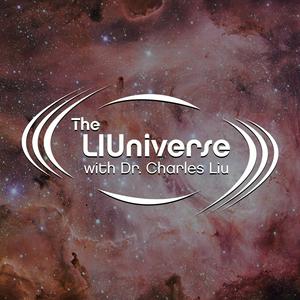
Get the free radio.net app
- Stations and podcasts to bookmark
- Stream via Wi-Fi or Bluetooth
- Supports Carplay & Android Auto
- Many other app features
Get the free radio.net app
- Stations and podcasts to bookmark
- Stream via Wi-Fi or Bluetooth
- Supports Carplay & Android Auto
- Many other app features


The LIUniverse with Dr. Charles Liu
download the app,
start listening.

